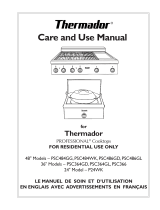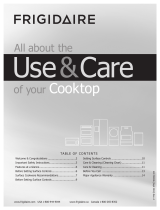
15
US
CA
DOs DON’Ts
Read these cleaning instructions and the ‘Safety
and warnings’ section before you start cleaning
your cooktop.
Before cleaning or removing any part, make
sure that everything on the cooktop has been
turned off.
Unless suggested otherwise in the chart
following, allow any part to cool to a safe
temperature before cleaning. If you do need to
handle a warm or hot part (e.g. grill or griddle),
take extreme care. Wear long protective mitts
to avoid burns from steam or hot surfaces.
Try using any cleaner on a small area first, to
ensure it doesn’t stain.
See the page following this chart for
instructions on replacing the burner parts.
To help you identify any parts, see illustrations
in section ‘Introduction’ and after this cleaning
chart.
Do not use aerosol cleaners until the
cooktop has completely cooled. The
propellant substance in these cleaners
could catch fire in the presence of heat.
Do not let soiling or grease accumulate
anywhere on the cooktop. This will make
future cleaning more difficult and may
present a fire hazard.
Do not use any abrasive or harsh
cleaners, cloths, scouring pads or steel
wool. These will scratch your cooktop
and damage its appearance.
Do not use a steam cleaner to clean any
part of the cooktop.
Do not perform any cleaning or
maintenance on parts not specifically
named in the chart below. If in doubt,
contact Customer Care.
Do not lift the black grill and griddle
frames off the cooktop.
Manual cleaning chart
What? How?
Important!
Control panel,
Sump area
around cooktop
burners,
Grill and griddle
covers,
Back trim
Front trim
1
Soften any stubborn stains
under a hot soapy cloth.
2
Clean with a solution of mild
detergent and hot water, then
wipe dry with a microfiber
cloth.
3
For extra shine, use a
suitable stainless steel
cleaner and polish, following
manufacturer’s instructions.
Always rub the stainless steel
in the direction of the polish
lines.
Always read the label to make sure
your stainless steel cleaner does not
contain chlorine compounds as these
are corrosive and may damage the
appearance of your cooktop.
Do not use and take care not to
spill any stainless steel cleaner on
the knobs. These are not stainless
steel parts and their surface may be
damaged by stainless steel cleaner.
Care and cleaning






















